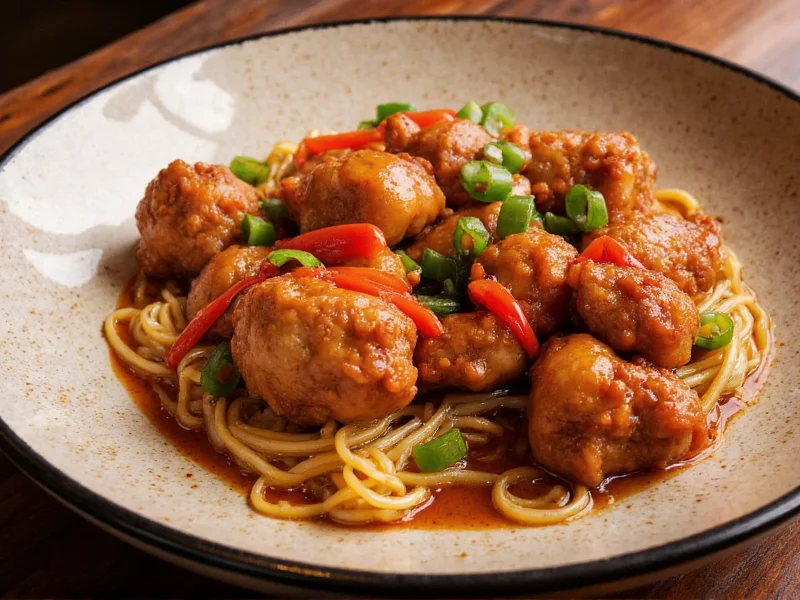When exploring authentic Chinese cuisine, understanding the difference between Hunan chicken vs Szechuan chicken is essential for appreciating regional culinary traditions. Both dishes showcase China's diverse flavor profiles but originate from distinct provinces with unique cooking philosophies. Hunan province (Xiang cuisine) in south-central China produces boldly spicy dishes reflecting its humid climate, while Szechuan province (Chuan cuisine) in the southwest creates complex, multi-dimensional flavors that have gained global popularity.
Flavor Profile Comparison
The most significant difference between Hunan chicken and Szechuan chicken lies in their fundamental flavor experiences. Hunan cuisine emphasizes la (spicy heat) with straightforward, aggressive heat that builds quickly. Chefs typically use fresh red chilies, garlic, and fermented black beans to create a 'dry heat' sensation that doesn't numb the mouth. This direct approach to spiciness makes Hunan chicken consistently hotter than its Szechuan counterpart for most palates.
Szechuan chicken, by contrast, features the signature ma la combination—ma referring to the tingling, numbing sensation from Szechuan peppercorns, and la representing the chili heat. This dual sensation creates a more complex flavor experience where the heat builds gradually while the mouth feels temporarily anesthetized. Authentic Szechuan dishes often incorporate additional flavor dimensions including sweet, sour, and salty elements for balance.
| Characteristic | Hunan Chicken | Szechuan Chicken |
|---|---|---|
| Primary Heat Source | Fresh red chilies | Dried chilies + Szechuan peppercorns |
| Heat Quality | Direct, immediate 'dry heat' | Numbing-spicy 'ma la' sensation |
| Flavor Complexity | Simpler, more straightforward | Layered with sweet/sour elements |
| Common Aromatics | Garlic, shallots, fresh ginger | Garlic, ginger, fermented豆豉 (douchi) |
| Sauce Base | Lighter, oil-based | Thicker, often with cornstarch |
Ingredient Analysis
When examining Hunan chicken ingredients versus Szechuan chicken components, several key distinctions emerge. Authentic Hunan chicken recipes rely heavily on fresh ingredients—particularly fresh red chilies, garlic, and shallots—that create an immediate, penetrating heat. The sauce typically contains soy sauce, rice wine, and sometimes a touch of vinegar, but rarely incorporates significant sweetness. Hunan chefs often use smoked ingredients to add depth to their aggressively spicy profiles.
Szechuan chicken ingredients feature the essential Szechuan peppercorns (actually berries from the prickly ash tree), which contain hydroxy-alpha sanshool that creates the distinctive numbing sensation. Dried red chilies provide the heat component, while doubanjiang (fermented broad bean paste) contributes umami depth. Many Westernized versions of Szechuan chicken include sugar or honey, creating the sweet-spicy profile many associate with the dish, though traditional preparations balance flavors more subtly.
Cooking Techniques and Presentation
The preparation methods for Hunan chicken vs Szechuan chicken reveal further culinary distinctions. Hunan cooking typically employs high-heat stir-frying with minimal sauce, resulting in drier dishes where ingredients maintain their individual textures. This 'dry cooking' technique allows the intense chili heat to permeate the dish without being tempered by heavy sauces.
Szechuan chicken preparation often involves a two-step cooking process: first blanching or frying the chicken, then creating a complex sauce with multiple ingredients before combining everything. The final dish typically has a glossy appearance from cornstarch-thickened sauce that clings to the ingredients. Authentic Szechuan chicken presentation emphasizes the vibrant red color from chilies contrasted with the characteristic reddish-brown hue of fermented bean pastes.
Regional Origins and Culinary Philosophy
Understanding the Hunan province vs Szechuan province culinary traditions provides context for their distinct approaches. Hunan's humid subtropical climate has shaped a cuisine focused on strong flavors that stimulate appetite and combat dampness. The region's abundant freshwater resources and agricultural products influence its ingredient selection, with smoked and cured foods playing significant roles in traditional cooking.
Szechuan province's mountainous terrain and historical isolation fostered a cuisine that developed complex preservation techniques. The region's famous peppercorns grow wild in the area, becoming integral to local cooking. Szechuan chefs pride themselves on the 'seven flavors and eight cooking methods' philosophy, emphasizing balance among spicy, numbing, sour, sweet, salty, bitter, and aromatic elements through various preparation techniques.
Choosing Between Hunan and Szechuan Chicken
When deciding between Hunan chicken and Szechuan chicken at a restaurant, consider your heat tolerance and flavor preferences. If you prefer straightforward, intense heat without numbing sensations, Hunan chicken delivers consistent spiciness that builds predictably. Those who enjoy complex flavor experiences with multiple dimensions will appreciate Szechuan chicken's interplay of numbing and spicy elements, often balanced with subtle sweet or sour notes.
For home cooking enthusiasts exploring authentic Chinese recipes, Hunan chicken generally requires fewer specialty ingredients (primarily fresh chilies and garlic), while Szechuan chicken necessitates obtaining genuine Szechuan peppercorns and doubanjiang for authentic flavor. Many Western restaurants modify both dishes significantly, so seeking out authentic Chinese establishments provides the best opportunity to experience these regional specialties as intended.
Common Misconceptions
Several misconceptions surround the Hunan chicken vs Szechuan chicken comparison. Many believe Szechuan cuisine is uniformly hotter than Hunan, when in fact authentic Hunan dishes typically register higher on the Scoville scale. The numbing quality of Szechuan peppercorns creates a different sensation that may feel less immediately intense despite potentially comparable heat levels.
Another frequent error involves confusing Americanized versions with authentic preparations. What many Western restaurants label as 'Szechuan chicken' often bears little resemblance to the complex flavors of authentic Szechuan cuisine, typically emphasizing sweetness over the traditional ma la balance. Similarly, 'Hunan chicken' in many establishments lacks the aggressive dry heat characteristic of genuine Xiang cuisine.











 浙公网安备
33010002000092号
浙公网安备
33010002000092号 浙B2-20120091-4
浙B2-20120091-4